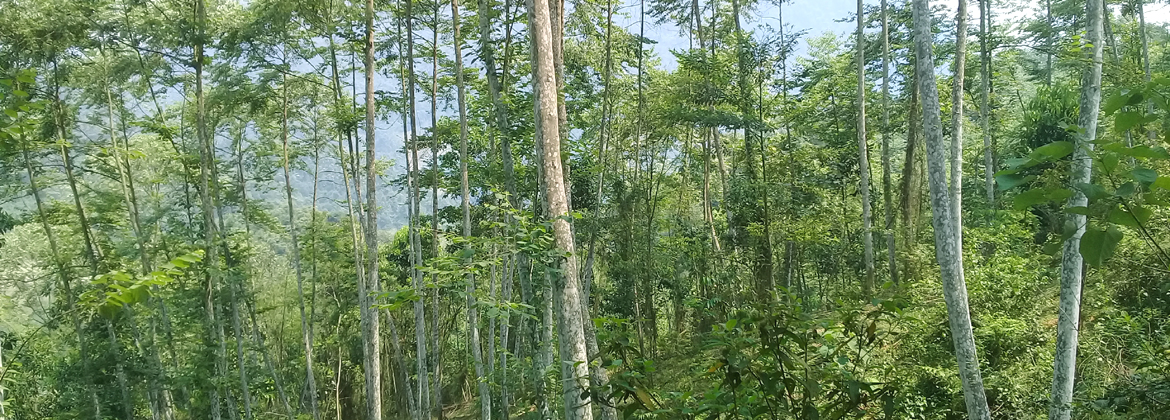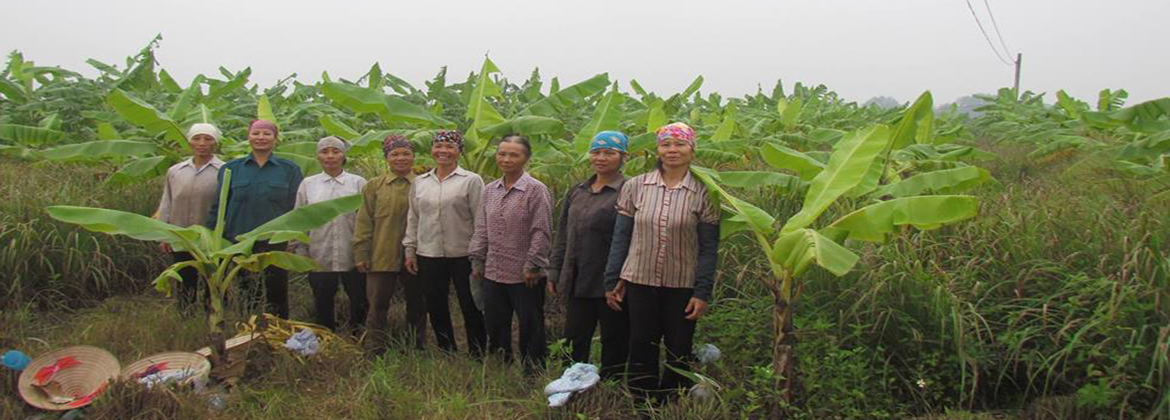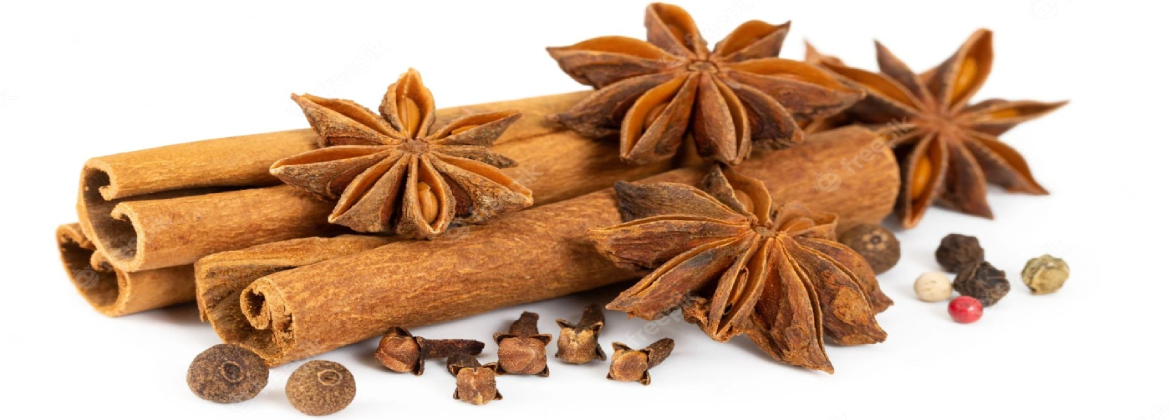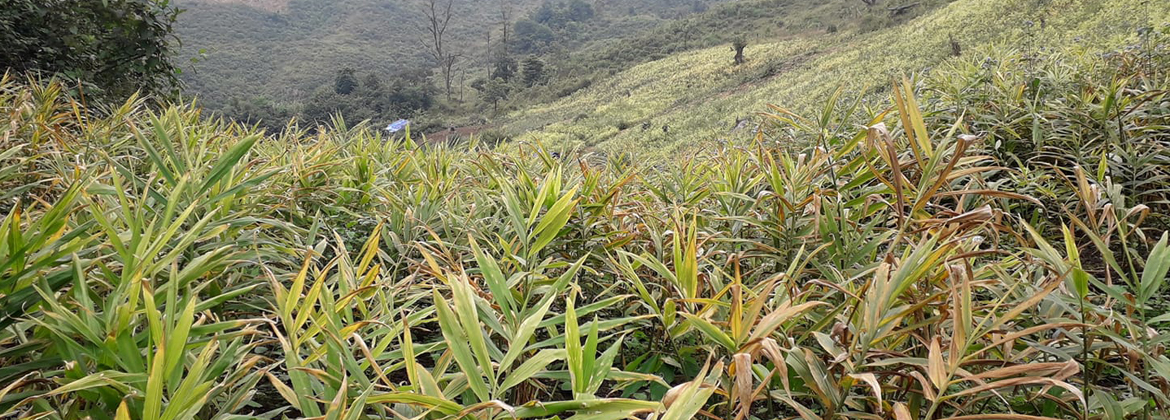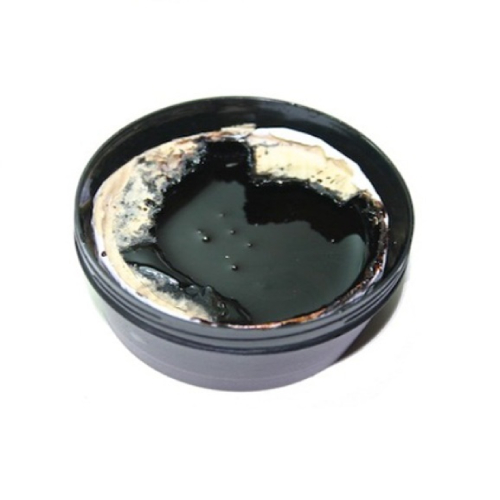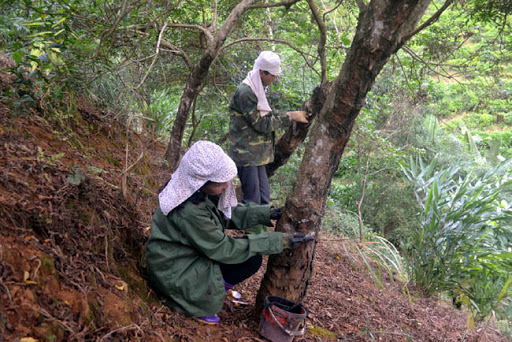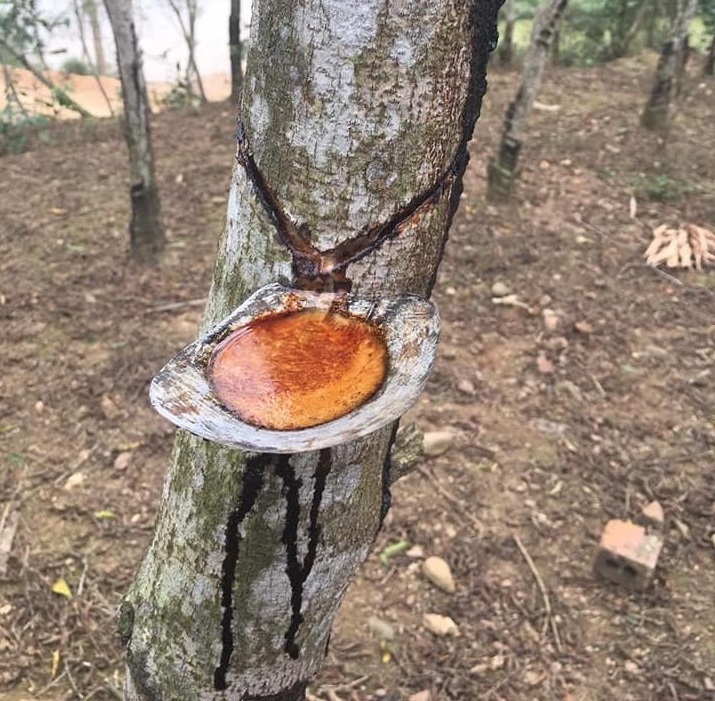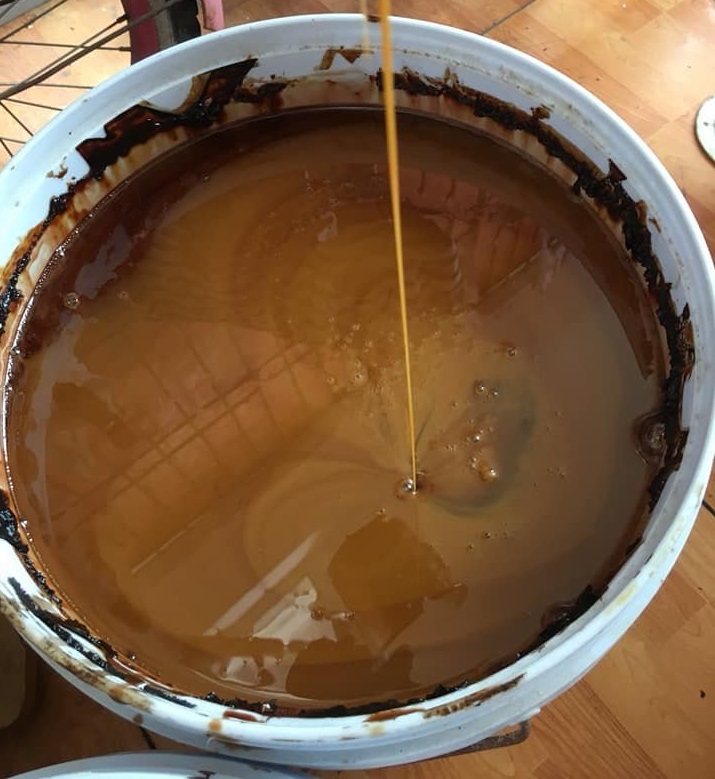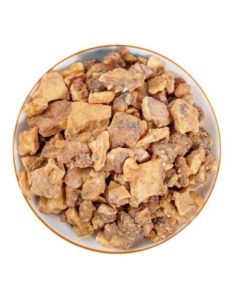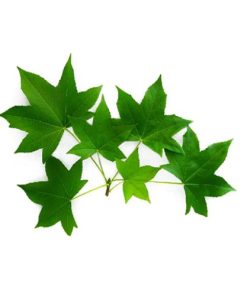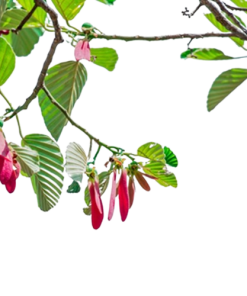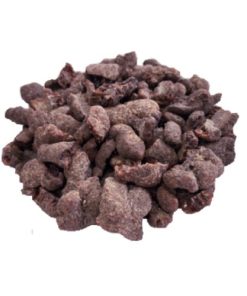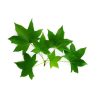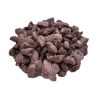LACQUER RESIN
Specification:
Botanical Name: Rhus verniciflua
Origin country: Vietnam
100% pure & natural
Part use: Resin
Shelf Life: Minimum of 5yrs
CAS Number: 8001-39-6
Package: 30 – 50 – 180 kgs/drum
18.900 $
About lacquer tree
Natural lacquer (other commercial name is Varnish resin, Urushi, Japan Sumac, Japan Wax) is one of humankind’s oldest materials. In the Stone Age, over 9,000 years ago, people discovered the adhesive and protective properties of the sap of the lacquer tree and used it in the making of spears and arrows, and to strengthen and protect utensils and other objects. It is still used today by people in East Asia to protect and decorate plates, bowls and ornaments.
 In the past, in Vietnam, China, Korea, Tibet, Myanmar, Thailand, Cambodia and Laos natural lacquer was used extensively in the decorating temples, creating temple art, and making Buddhist images. Today, in many parts of East Asia, natural lacquer is still used in the production of tableware and utensils for everyday use as well as in creating urushi artwork. It is also used in the restoration of lacquerware and temple interiors.
In the past, in Vietnam, China, Korea, Tibet, Myanmar, Thailand, Cambodia and Laos natural lacquer was used extensively in the decorating temples, creating temple art, and making Buddhist images. Today, in many parts of East Asia, natural lacquer is still used in the production of tableware and utensils for everyday use as well as in creating urushi artwork. It is also used in the restoration of lacquerware and temple interiors.
Natural lacquer is the purified sap of the lacquer tree. The scientific name of the tree used in Vietnam is Rhus vernicifera (Toxicodendron vernicifluum). It is native to Vietnam, China, Korea, Japan. The sap of this tree contains a resin, which when exposed to moisture and air, polymerizes and becomes a very hard, durable, plastic-like substance—lacquer! Lacquer is, in fact, a natural plastic.
In Vietnam, there are lacquer tree plantations in Phu Tho, Hoa Binh, Lao Cai, Tuyen Quang where the sap is still collected. Once planted urushi can be collected for about 10 to 15 years. Urushi is collected from May to October. The raw lacquer is then filtered to remove impurities. It is then further refined. First by removing moisture and then by stirring the liquid to create a fine emulsion. The active component is “urushiol”, which when exposed to moisture and air, polymerizes and hardens (it does not actually “dry”). Constant temperature and humidity is required for it to harden uniformly, so urushi work is often “dried” in special dust free chambers. Once hardened, urushi is resistant to alkali, acid, and heat.
By adding various natural pigments, lacquer can be colored―black, red, brown, or yellow.
Certificate of Analysis
CERTIFICATE OF ANALYSIS
No: 12/ 2023/SONTA
Product name |
LACQUER RESIN |
Cas No. |
9000-59-3 |
Manufacturing date |
12/2023 |
Expiry date |
12/2025 |
Origin |
Vietnam |
Batch No. |
SONTA1223 |
No |
Specifications |
Standards |
Results |
01 |
Appearance |
Viscous resin |
Complies |
02 |
Colour |
White yellow to dark resinous mass |
Complies |
03 |
Odour |
Characteristic odour |
Complies |
04 |
Solubility |
Soluble in alcohol & Insoluble in water |
Complies |
05 |
Chemical composition |
Resin (65%) |
Complies |
06 |
Conclusion |
Comply all of the standards for Lacquer Resin. |
|
Storage: Store in airtight containers in cool & dry place away from light & heat.
Caution: Avoid contact with eyes, inner ears, and sensitive areas.
MSDS
MATERIAL SAFETY DATA SHEET
(according to Regulation (EU) No. 1907/2006)
Product name: Lacquer Resin
Number: SONTA1223
1. IDENTIFICATION OF SUBSTANCE/PREPARATION & COMPANY.
Product name: Lacquer Resin
Manufacturer/Supplier: Vietnam Essential Oil., JSC
Add: Bai Dai Village, Tien Xuan Commune, Ha Noi City, Vietnam
Emergency telephone: +84 903561868
Emergency Contact: Mr. Peter Tron
2. COMPOSITION / INFORMATION ON INGREDIENTS.
Definition/Botanical Origin: Lacquer Resin is the resinous of Rhus verniciflua tree original Vietnam.
Composition: 100% pure & natural, raw material
CAS No: 9000-59-3
3. HAZARDS IDENTIFICATION:
This product is not hazardous. Not dangerous for the environment.
H304 May be fatal if swallowed and enters airways
H315 Causes skin irritation
H317 May cause an allergic skin reaction
H319 Causes serious eye irritation
4. FIRST-AID MEASURES:
Inhalation: Remove from exposure site to fresh air. Keep at rest. Obtain medical attention.
Eye contact: Rinse immediately with plenty of water for at least 15 mins. Contact a doctor if symptoms persist.
Skin contact: Remove contaminated clothes. Wash thoroughly with soap & water, flush with plenty of water. If irritation persists, seek medical advice.
Ingestion: Rinse mouth out with water. Seek medical advice immediately.
Other: When assessing action take Risk & Safety Phrases into account (Section 15)
5. FIRE FIGHTING MEASURES.
Extinguishing media Use CO2, Dry Powder or Foam type Extinguishers, spraying extinguishing media to base of flames. Do not use direct water jet on burning material.
Special measures: Avoid vapour inhalation. Keep away from sources of ignition. Do not smoke. Wear positive pressure self-contained breathing apparatus & protective clothing.
Extinguishing procedures: Closed containers may build up pressure when exposed to heat and should be cooled with water spray.
6. ACCIDENTAL RELEASE MEASURES.
Personal precautions: Avoid inhalation & direct contact with skin & eyes. Use individual protective equipment (safety glasses, waterproof-boots, suitable protective clothing) in case of major spillages.
Environment precautions: Keep away from drains, soils, surface & groundwaters.
Cleaning up methods Remove all potential ignition sources. Contain spilled material. Cover for spillages: with an inert or non-combustible inorganic absorbent material, sweep up and remove to an approved disposal container. Observe state, federal & local disposal regulations.
7. HANDLING & STORAGE.
Precautions in handling: Apply good manufacturing practice & industrial hygiene practices, ensuring proper ventilation. Observe good personal hygiene, and do not eat, drink or smoke whilst handling.
Storage conditions: Store in tightly closed original container, in a cool, dry & ventilated area away from heat sources & protected from light. Keep air contact to a minimum.
Fire protection: Keep away from ignition sources & naked flames. Take precautions to avoid static discharges in working area.
8. EXPOSURE CONTROLS/PERSONAL PROTECTION.
Respiratory protection: Avoid breathing product vapour. Apply local ventilation where possible.
Ventilation: Ensure good ventilation of working area.
Hand protection: Avoid all skin contact. Use chemically resistant gloves if required.
Eye protection: Use safety glasses.
Work/Hygiene practices: Wash hands with soap & water after handling.
9. PHYSICAL & CHEMICAL PROPERTIES.
Appearance: Dried resin
Colour: Orange-amber to brown resinous mass
Odour: Typical
Specific gravity at 20℃: not available
Refractive Index at 20℃: not available
Optical rotation at at 20℃: not available
Main components: Resin
Solubility: Insoluble in water./ Solubility in alcohol, solvents
10. STABILITY & REACTIVITY.
Reactivity: It presents no significant reactivity hazards, by itself or in contact with water. Avoid contact with strong acids, alkali or oxidising agents.
Decomposition: Liable to cause smoke & acrid fumes during combustion: carbon monoxide, carbon dioxide & other non-identified organic compounds may be formed.
11. TOXICOLOGICAL INFORMATION.
According to current information, not classed as hazardous to health in normal industrial use.
12. ECOLOGICAL INFORMATION.
Biodegradability: Data not available
Precautions: Prevent surface contamination of soil, ground & surface water.
13. DISPOSAL CONSIDERATIONS.
Avoid disposing to drainage systems and into the environment. Seek expert advice.
14. TRANSPORT REGULATIONS.
Shipping by road (ADR/RID): This product is not considered as dangerous goods
Shipping by air (IATA): This product is not considered as dangerous goods
Shipping by sea (IMDG): This product is not considered as dangerous goods
UN number: not regulated
UN proper shipping name: not regulated
Transportation hazard class: not regulated
Label: Sticklac Resin
15. REGULATORY INFORMATION. According to Directive 88/379/EEC
Hazards: Harmful
Symbols: n/a
Risk Phrases: Harmful if swallowed
Safety Phrases: If swallowed seek medical advice immediately and show the container / label
16. OTHER INFORMATION.
Cosmetics Directive – 7th Amendment – Not Restricted
Check maximum usage levels for skin care products.
PACKAGING:
In Jute bag 30-50kg
SHELF LIFE:
Best before of 24 months from the date of manufacturing.
Q.C. REQUIREMENTS.
In-line with general product specification. Always satisfy suitability for specific application.
The data provided in this material safety data sheet is meant to represent typical data/analysis for this product and is correct to the best of our knowledge. The data was obtained from current and reliable sources, but is supplied without warranty, expressed or implied, regarding its’ correctness or accuracy. It is the user’s responsibility to determine safe conditions for the use of this product, and to assume liability for loss, injury, damage or expense arising from improper use of this product. The information provided does not constitute a contract to supply to any specification, or for any given application, and buyers should seek to verify their requirements and product use.
GC/MS
CERTIFICATE OF ANALYSIS
No: 12/ 2023/SONTA
Product name |
LACQUER RESIN |
Cas No. |
9000-59-3 |
Manufacturing date |
12/2023 |
Expiry date |
12/2025 |
Origin |
Vietnam |
Batch No. |
SONTA1223 |
No |
Specifications |
Standards |
Results |
01 |
Appearance |
Viscous resin |
Complies |
02 |
Colour |
White yellow to dark resinous mass |
Complies |
03 |
Odour |
Characteristic odour |
Complies |
04 |
Solubility |
Soluble in alcohol & Insoluble in water |
Complies |
05 |
Chemical composition |
Resin (65%) |
Complies |
06 |
Conclusion |
Comply all of the standards for Lacquer Resin. |
|
Storage: Store in airtight containers in cool & dry place away from light & heat.
Caution: Avoid contact with eyes, inner ears, and sensitive areas.
Review
ss


